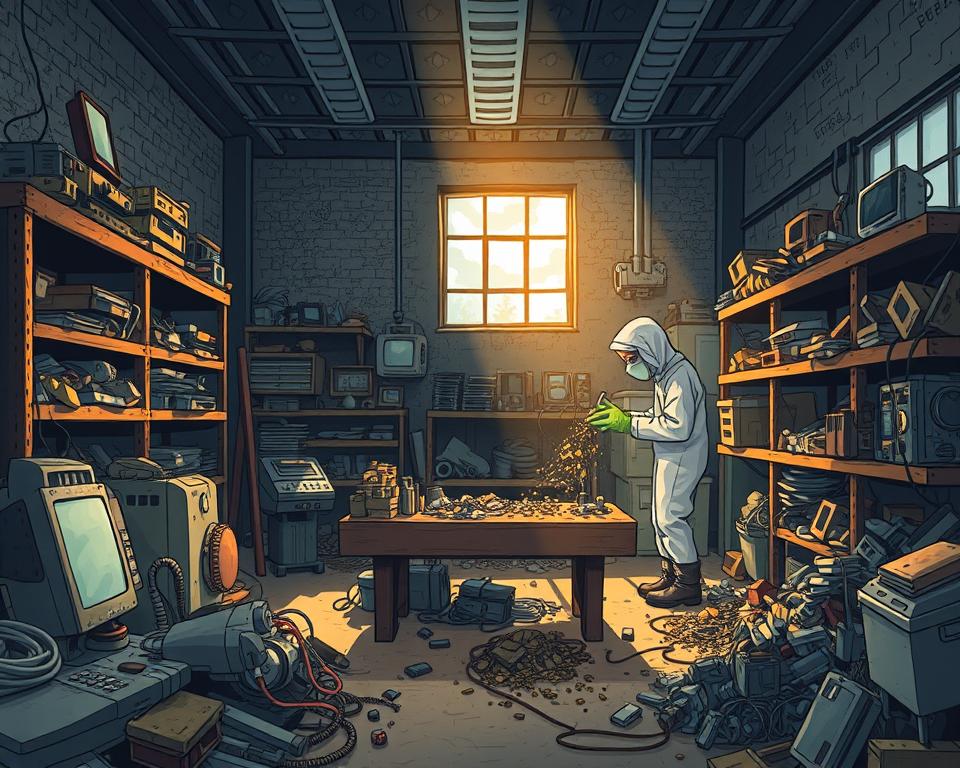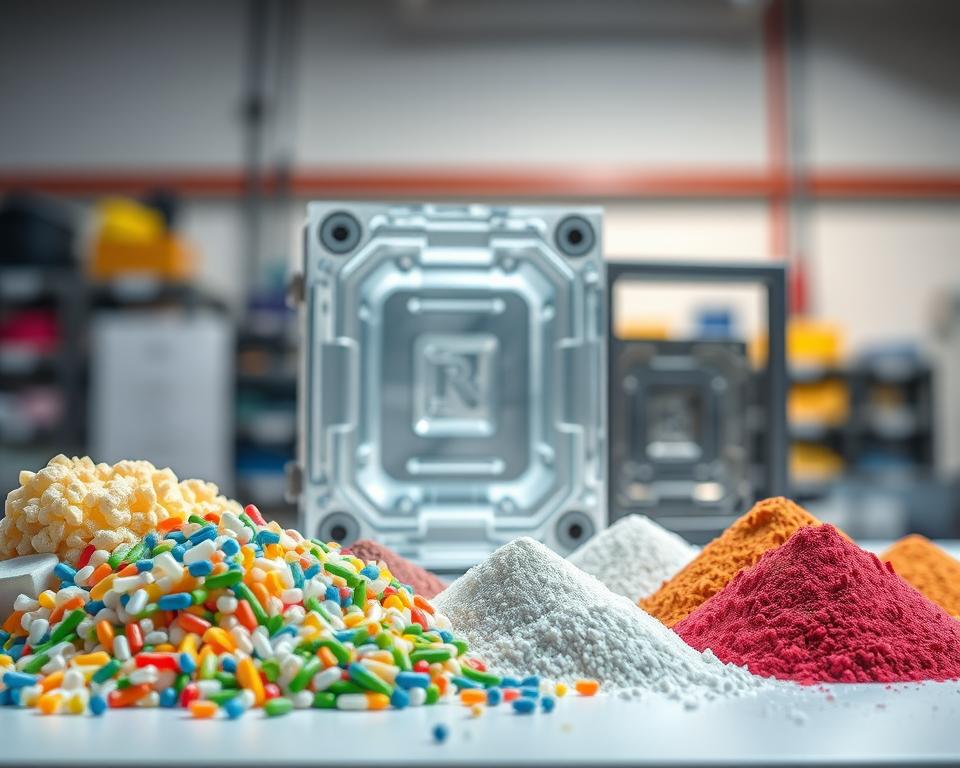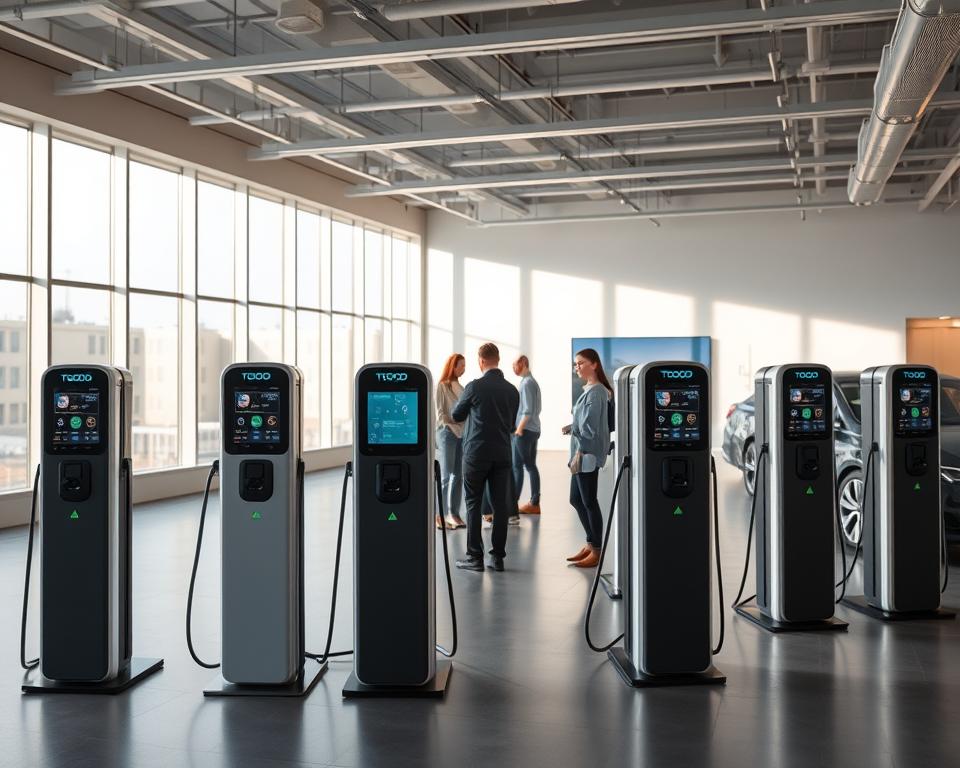Your Sustainable Precious Metal Recycling Guide
Were you aware that electronic waste throws away over $60 billion of precious metals annually? Such a massive amount highlights why precious metal recycling is so vital. It’s not just good for our economy but also for the environment. When we recover gold, silver, platinum, and palladium, we reduce pollution and conserve resources.
Firms like Dongsheng Metal Trading spearhead the movement toward greener recycling. They guarantee that valuable metals return to use instead of filling dumps. Such a precious metals recycling companies model drives eco-friendly recycling and sustainable methods.
Essential Conclusions
- Each year, e-waste discards over $60 billion in precious metals.
- Precious metal recycling reduces environmental impact and conserves resources.
- Valuable metals include gold, silver, platinum, and palladium.
- Eco-friendly recycling practices are vital for sustainable development.
- Firms such as Dongsheng Metal Trading focus on precious metal recovery.
What Makes Precious Metals So Valuable
Rare metallic elements known as precious metals attract both investors and manufacturers. Gold, silver, platinum, and palladium stand out for their distinct qualities. Notable traits are excellent conductivity, corrosion resistance, and rarity. Given the resource-intensive mining and processing, recycling precious metals is essential.

Intrinsic qualities and demand in the marketplace determine precious metals’ worth. Recovering metals is key to keeping the supply chain alive. It lowers the ecological damage from mining. Through exhaustive recycling processes, these metals can be restored to their original state. Such efforts save limited resources and create economic gains.
Precious Metals Explained
Precious metals possess unique characteristics that make them desirable for a variety of applications. Economic value stems from their scarcity and innate qualities. For example:
- Gold: Prized for its shine and tarnish-proof nature.
- Silver: Known for flexible uses and excellent conductivity.
- Platinum: Renowned for strength and catalytic uses.
- Pd: Gaining traction in cars and electronics.
Reasons to Recycle Precious Metals
The practice of recycling precious metals has emerged as a vital component for sustainability. It preserves resources and lessens the environmental cost of mining. Key benefits include:
- Lessening of habitat destruction from mining.
- Energy needs are far lower than mining virgin ore.
- Feeding materials back into the production loop.
- Potential for financial gains through the reclaiming of high-value materials.
Why Precious Metal Recycling Matters
Recovering metals delivers big eco and financial wins. Emphasizing benefits helps cut environmental harm. It also drives economic growth and stability.
Green Benefits
The environmental benefits of recycling precious metals are significant. By reclaiming metals from discarded electronics and industrial scrap, we cut down on landfill waste. That cuts new mining needs and saves resources.
It lessens mining impacts, including ecosystem harm and contaminants. By prioritizing recycling, we work toward a greener tomorrow.
Economic Benefits
The economic benefits of recycling are equally compelling. Using reclaimed metals trims manufacturing budgets. That shift enables firms to opt for recycled rather than virgin metals.
It spawns jobs in recovery plants and steadies markets as recycled-metal demand rises. Harnessing these gains helps firms improve their bottom line. They add to a more sustainable marketplace.
How Precious Metals are Recycled
Recovering precious metals involves multiple steps for peak efficiency. Collection of e-waste, jewelry, and industrial scrap kicks off the process. They are sorted, decontaminated, and analyzed to gauge composition and value.
Recycling Workflow
This systematic approach is vital for effective metal recovery. Each step is designed to optimize the yield of precious metals. Metals are sorted according to their type and purity. Cleaning removes contaminants that could hinder recovery. Analysis identifies the concentration of precious metals, guiding the choice of recycling techniques.
Recycling Techniques Used
Advanced recycling techniques are employed to achieve high metal recovery rates. One method, thermal reduction, leverages heat to separate metals from base materials. Smelting and chemical baths extract and purify metals. Recyclers like Dongsheng Metal Trading employ these approaches to improve yields and returns.
Recyclable Precious Metals
Recovery efforts support both ecology and resource reclamation. Many precious metals can be recycled, benefiting both the economy and the planet. Knowing which metals are recyclable helps individuals and firms.
Gold, Silver, and Platinum
Familiar precious metals include gold, silver, and platinum. They appear in jewelry, coinage, and industrial components. Gold recovery is widespread because of its worth and need. Silver recycling is also key, used in photography, electronics, and solar panels.
Platinum, though less common, is valuable, mainly in catalytic converters.
Electronics Precious Metals
Electronic precious metals offer unique recycling chances. Gadgets—from phones to laptops—house palladium, indium, and more. These metals are a treasure trove for recycling, reducing e-waste and providing essential materials.
The need to recycle these metals is critical. Sectors strive to cut waste and boost recycling efficiency.
Industry Benefits of Precious Metal Recovery
Recycling precious metals supports industries by providing efficient, green resource supply. Device manufacturing in electronics profits hugely from recovered metals. The aerospace and medical fields use precious metals in essential applications. Examining industry recovery uncovers eco- and economic advantages.
E-Waste Sector
Electronics spearheads recovery, given the metal content in phones and PCs. Rapid technological advancements have led to a significant increase in electronic waste. Thus, recycling gold, silver, and palladium efficiently becomes vital. That saves resources and cuts mining carbon footprints.
Companies are increasingly focusing on recycling to meet global sustainability and waste reduction goals. Such a move upholds efforts to conserve and protect.
High-Tech Industries
Aerospace metal recycling is vital for the aerospace and medical industries, which rely on precious metals for critical components. Alloys prized for strength and anti-corrosion make up flight and medical components. Recovering them cuts costs and meets green regulations.
They recognize that recycling offsets material scarcity. Plus, it boosts efficiency, cementing recycling as a sustainability strategy.
Selecting Recycling Partners
Choosing reputable metal recyclers is vital for success. It’s wise to ask important questions to understand their operations. Their fees and techniques will shape your outcome. By comparing services, you can see what each company offers and make a smart choice.
What to Ask a Recycler
- Can you share your precious-metal recovery accreditations?
- How do you process various precious metals?
- Which recovery percentages do you achieve for each metal?
- Can you detail your fees and any surcharges?
- Can you provide references or testimonials from previous clients?
Evaluating Offers
You must evaluate services side-by-side to pick the right recycler. Create a table to compare key factors such as:
| Company Name | Recovery Rate (%) | Processing Fee ($) | Turnaround Time (Days) |
|---|---|---|---|
| Recycling Co. A | 95 | 50 | 7 |
| Recycling Co. B | 90 | 45 | 5 |
| Recycling Co. C | 92 | 55 | 10 |
By comparing recycling services, you can find the best recycler for your needs. It guarantees maximum value and compliance.
Your Metal Recycling Handbook
Knowing recycler operations matters if you recycle metals. These experts manage the entire process, from collection to processing. That approach drives top efficiency and returns.
Behind the Scenes of Recycling
Advanced workflows—assay, separation, smelting—unlock metal value. Collection comes from devices, jewelry, and industrial waste. Next, they employ precise methods to sort metals. In the last stage, precious metals are refined to purity.
That workflow both boosts recovery and promotes green methods. It’s a critical step towards sustainable development.
Finding Your Perfect Recycling Partner
When picking a recycler, several factors are important. Begin by checking their green credentials. A focus on sustainability is non-negotiable. Also, consider the services they offer, from basic collection to full processing.
Cost is equally important. Get quotes to compare different options. Companies like Dongsheng Metal Trading offer customized solutions for various industries. They remain a trusted partner for targeted recovery.
The Role of Metal Recycling Facilities
Metal recycling is a critical sector for sustainable practices and waste management. There are specialized centers for different metals and materials. Understanding these facilities improves access to recyclers and their services. That supports firms and ecosystems alike.
Facility Categories
Facilities differ greatly in their focus and processes. Some yards recover gold and silver; others accept all metal waste. Common examples include:
- General scrap yards handle both ferrous and non-ferrous materials.
- High-value metal recyclers provide precision recovery for gold, silver, platinum, etc.
- Electronics recyclers extract metals from old gadgets.
Location and Access to Facilities
Accessibility to recyclers is key for efficient metal recovery. Companies should evaluate haulage considerations. Key access factors include:
| Factor | Description |
|---|---|
| Distance | Facilities located nearer to businesses minimize transportation costs and time. |
| Partnerships | Connections with nearby facilities speed up recycling. |
| Service Range | Awareness of service menus aids in picking the right center. |
Ultimately, facility type and access shape recycling success.
Recovering Metals from E-Waste
Discarded electronics threaten the environment. Old gadgets hide valuable metals ripe for recovery. This highlights the importance of seeing e-waste as a valuable resource.
Electronic Precious Metals
Devices often contain bits of gold, silver, and palladium. You’ll find them in components such as:
- Circuit boards
- Connectors and ports
- Capacitors and resistors
- Battery terminals
Common electronics conceal recoverable metals. Recycling lets us reclaim and repurpose those metals.
The Importance of E-Waste Recycling
Recovering e-waste metals safeguards the environment and reclaims materials. It reduces landfill waste and saves natural resources. Key perks include:
- It cuts ecological hazards from poor e-waste handling
- It reduces CO₂ output via green recycling methods
- It supports the circular economy by recycling materials back into production
Encouraging electronic recycling promotes sustainable resource management. It lays the groundwork for a greener future.
The Future of Precious Metal Recycling
Recycling is changing fast thanks to new tech and eco-driven demand. With resource conservation rising, recyclers are innovating. They are embracing new methods and processes, setting the stage for the future of recycling precious metals.
Green Recycling Trends
Modern green recycling strives to cut waste and eco-damage. Businesses adopt green packaging and energy-saving techniques. Such moves match worldwide green goals and nudge industries to be more eco-responsible.
New Metal Recovery Tech
Breakthroughs in recovery boost metal recycling yields. Robotic sorting and chemical extraction raise recovery. These innovations not only increase resource extraction but also reduce environmental impact, marking a significant step forward in recycling precious metals.
Starting a Precious Metal Recycling Venture
Building a metal recycling enterprise calls for thorough planning and industry knowledge. Entrepreneurs must outline key steps to build a strong foundation and adhere to industry regulations. That means in-depth market analysis and client identification. Also, obtaining necessary permits and understanding legal aspects is vital for sustained success.
Business Setup Steps
To launch your recycling venture, follow these steps:
- Research the market to grasp demand and competition.
- Develop a detailed business plan outlining goals and strategies.
- Invest in equipment tailored to your process needs.
- Raise startup funds through financing or investors.
- Get all required permits and licenses.
- Launch marketing to attract clientele.
Regulatory & Certification Needs
Knowing regulatory requirements is vital for a recycling startup. Adherence to environmental regulations ensures your operation is safe and sustainable. Must-know compliance points:
- Securing business certification from relevant authorities.
- Ensuring full compliance with disposal and recycling laws.
- Certifying employee knowledge of safety and handling rules.
Wrapping It Up
Precious metal recycling is essential for preserving natural resources and improving environmental health. It empowers all of us to reduce environmental harm from waste. The recovered metals reduce mining needs and boost the economy by creating jobs in recycling.
Beyond green gains, recycling yields financial perks. Working with Dongsheng Metal Trading guarantees green standards. That partnership bolsters circular models for recyclers and buyers alike.
Our path to sustainability relies on united metal recovery initiatives. Growing awareness can lead to a society that values responsible consumption and environmental care. Implementing these measures supports us today and safeguards future generations.


